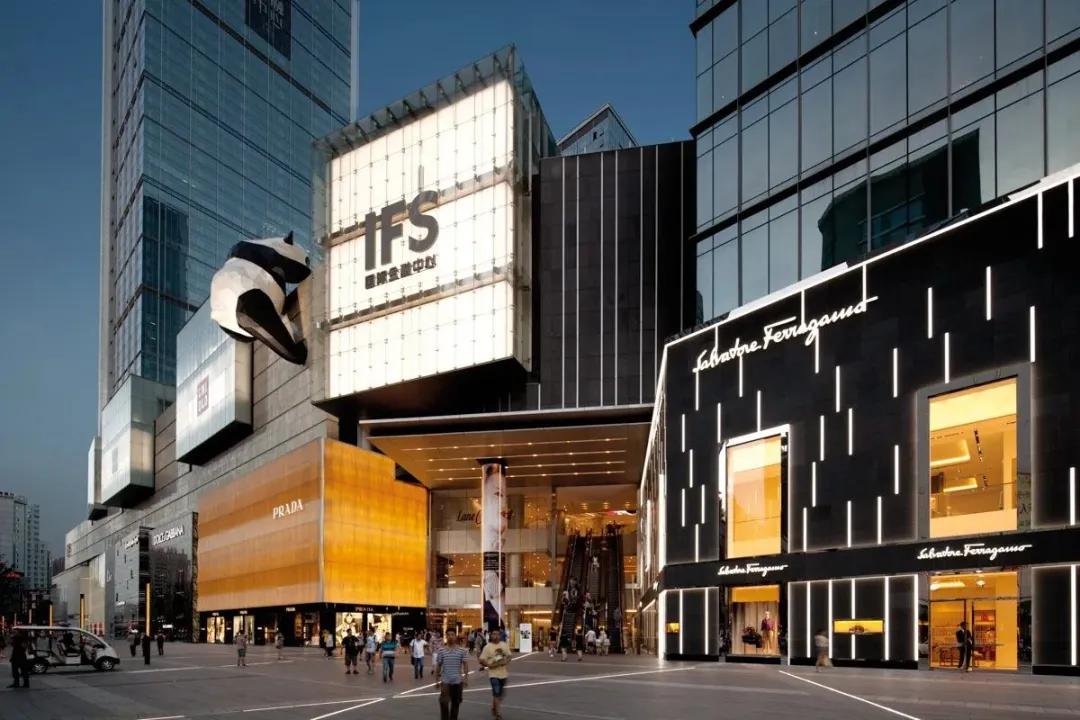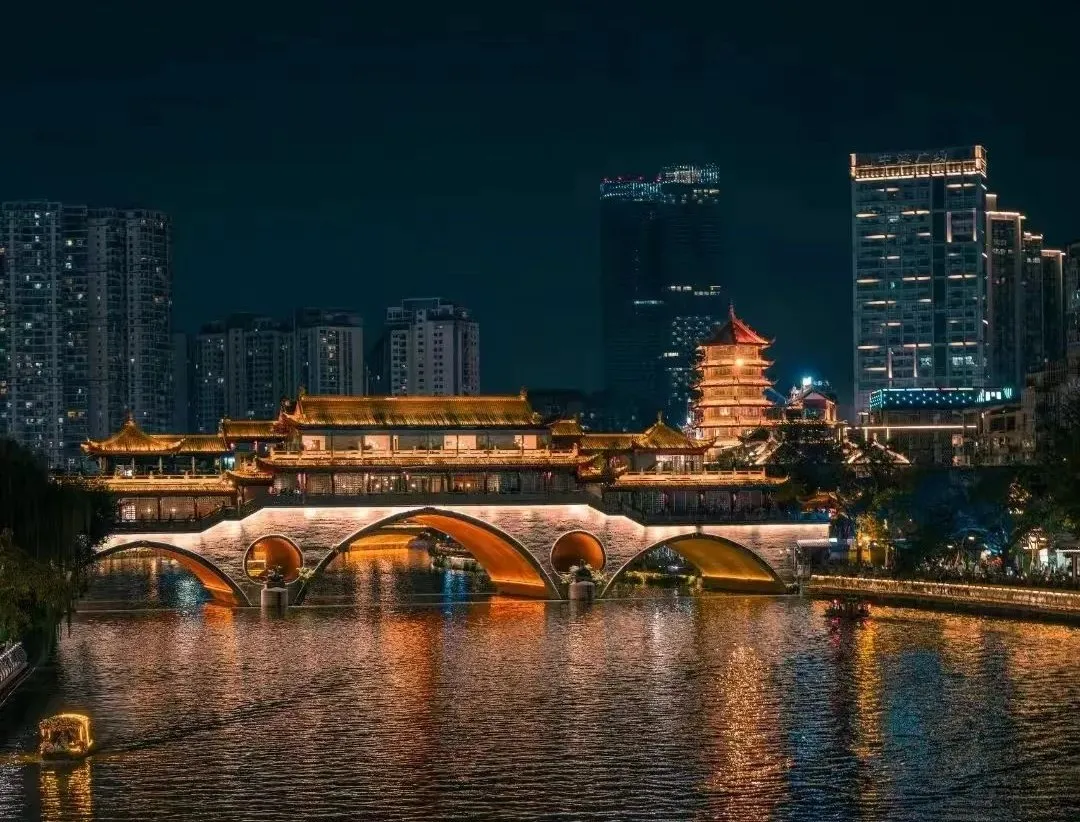
Release Date:2024.10.10
13th Leman China Swine Conference & World Swine Industry Expo
Date: October 25-27
Western China International Expo City (Chengdu)

Chapter 1 Travel Guide
Attractions Recommendation
China Lane
Broad and Narrow Alley is located in Changshun Street in the Qingyang District of Chengdu, Sichuan Province. It consists of three parallel alleys: broad alley, narrow alley, and across alley, all featuring ancient courtyard-style buildings made of blue bricks and tiles. This area is one of the largest preserved Qing Dynasty streets in Chengdu and is known as one of the three major historical and cultural preservation districts in the city, along with Daci Temple and Wenshu Monastery.
In the 57th year of the Kangxi Emperor's reign (1718), after pacifying the Zunghars, over a thousand soldiers were stationed in Chengdu to build the city. In the early years of the Republic of China, local authorities changed the term "hutong" to "alley." In the 1980s, Broad and Narrow Alley was included in the Chengdu Historical and Cultural City Protection Plan. The area officially entered the global lexicon in 2003.

Giant Panda Base
The Chengdu Research Base of Giant Panda Breeding is located at 1375 Panda Avenue, Chenghua District, Chengdu, about 10 kilometers from the city center and over 30 kilometers from Chengdu Shuangliu International Airport.
It is a world-renowned conservation base for giant pandas, a research and breeding center, and a public education and tourism site. The base covers an area of 1,000 acres. As a "Giant Panda Relocation Ecological Demonstration Project," it is dedicated to protecting and breeding endangered wildlife unique to China, such as giant pandas and red pandas.

Global Center
The New Century Global Center (Chengdu Global Center) is located at 1700 North Tianfu Avenue, Chengdu. It covers approximately 1,300 acres, with a total construction area of about 1.76 million square meters, serving as a multifunctional complex for entertainment, exhibitions, business, shopping, and hotels. It falls under the jurisdiction of the Guixi Street area in Chengdu High-tech Zone.
The main structure of the New Century Global Center was completed in 2012 and officially opened in September 2013. The design, created by China Southwest Architectural Design Institute, resembles "flying seagulls and rolling waves," forming a "water treasure basin" against the backdrop of sunlight and water features. It is 3 kilometers from Chengdu South Railway Station and approximately a 50-minute bus ride from Shuangliu International Airport, as well as a 20-minute drive from Chengdu East Railway Station.
The New Century Global Center is hailed as the largest single building in Asia (some say the world), capable of accommodating 20 Sydney Opera Houses and 3 Pentagon buildings.

Mount Qingcheng
Mount Qingcheng is located southwest of Dujiangyan City, Chengdu, 68 kilometers east of Chengdu city center, and 10 kilometers southwest of the Dujiangyan Irrigation Project.
As a UNESCO World Heritage site, Qingcheng Mountain - Dujiangyan is a major scenic area, a national key cultural heritage site, a national key scenic area, a national 5A-level tourism destination, and the holy land of the Quanzhen Longmen Sect. It is one of the ten great caves and one of the four famous Taoist mountains in China, as well as one of the ten scenic spots in Chengdu.
Renowned for its tranquil valleys, ancient Taoist temples, and fresh air, Qingcheng Mountain is a famous Taoist mountain. Here, visitors can explore historical sites such as Tianshi Cave and Shangqing Palace, experiencing the profound heritage of Taoist culture.

Dujiangyan
Dujiangyan is located in the western part of Chengdu, situated on the Min River. It is a massive engineering system composed of the headworks, various irrigation channels, and various construction projects, including large, medium, and small reservoirs and ponds. The headworks cover an area of over 200 acres.
Dujiangyan, a UNESCO World Heritage site, is a treasure of ancient Chinese hydraulic engineering. With its beautiful mountains and clear waters, it is an excellent place to learn about ancient Chinese water culture and history. The Dujiangyan scenic area is mainly divided into three parts: Lidui Park, the irrigation project, and the Yulei Mountain area.

Sichuan Tower of China
Sichuan Tower of China, also known as the Tianfu Panda Tower, is located at 168 Mengzhuiwan Street, Chenghua District, Chengdu. This 339-meter-high television tower is a landmark building in Sichuan Province and Chengdu City. Covering an area of 10 acres, it consists of observation decks, a high-altitude rotating restaurant, and an exhibition area for sightseeing, dining, and business activities. The tower's unique design incorporates panda elements, showcasing the charm of traditional Chinese culture. It serves as the broadcasting signal center for Sichuan Province and a new landmark for Chengdu, representing the city's modern urban landscape.

Chengdu International Finance Square
Chengdu International Finance Square is located on Chunxi Road, in the golden zone of Chengdu's central business district. The project consists of four towers and a podium, with the first three towers having a total office building area of over 270,000 square meters. The first and second towers stand at 248 meters, with office spaces located on floors 8 to 50, making them rare twin super-class A office buildings in Chengdu. The office project is complemented by the top hotel brand, Niccolò, under Marco Polo. The seventh-floor public area features a sky garden, gallery, and dining areas. A large fashion shopping center housing international brands is also conveniently nearby.

Du Fu Thatched Cottage
The Chengdu Du Fu Thatched Cottage Museum is located at 37 Qinghua Road, Qingyang District, Chengdu, Sichuan Province. It was the former residence of the great Tang Dynasty poet Du Fu during his time in Chengdu. Du Fu lived here for nearly four years, during which he composed over 240 poems. The ruins of the cottage were discovered by the poet Wei Zhuang at the end of the Tang Dynasty, who rebuilt the thatched cottage to preserve it. It has been renovated and expanded during the Song, Yuan, Ming, and Qing dynasties.
The cottage covers an area of nearly 300 acres, with well-preserved architectural layouts from renovations in the 13th year of the Hongzhi reign (1500 AD) and the 16th year of the Jiaqing reign (1811 AD). The architecture is simple and elegant, while the gardens are serene and beautiful, making it a sacred site in Chinese literary history. The Du Fu Memorial Museum was established in 1955 and was renamed the Chengdu Du Fu Thatched Cottage Museum in 1985.

Jinli
Jinli is part of the Wuhou Shrine Museum, which includes the Three Kingdoms Historical Relics Area, Jinli Folk Customs Area, and West District (Three Kingdoms Cultural Experience Area). It is located at No. 231-1 Wuhouci Street, Wuhou District, Chengdu, situated within the first ring road of downtown Chengdu. Jinli is adjacent to the Jinjiang River to the north, faces the Rainbow Bridge to the east, and is separated from the well-known Wuhou Shrine by just a wall, while connecting to the western section of the first ring road.
Covering over 30,000 square meters, with a building area of more than 14,000 square meters, the street is 550 meters long. The architecture is based on the style of Sichuan residences from the late Qing Dynasty to the early Republic of China, while the content reflects Three Kingdoms culture and traditional Sichuan folk customs.
Main attractions in Jinli include: Jinli Ancient Street, Ancient Opera Stage, Jiupin Snack Street, Zhuge Well, First Archway of Western Shu, Fushou Alley, Huanglong Pool, Adou Well, Folk Memory Wall, Song Dynasty Stone Carving Gallery, and the Tomb of Liu Xiang.

Chunxi Road
Chunxi Road, one of the most bustling commercial streets in Chengdu, perfectly blends fashion and tradition. Here, not only can you find the dazzling allure of international brands leading fashion trends, but also the rich flavors of time-honored local delicacies, evoking warm and beautiful memories. The modern skyscrapers and traditional buildings on Chunxi Road complement each other, creating a unique landscape. In this vibrant area, you can indulge in the joys of shopping while savoring authentic Sichuan cuisine; feel the contemporary fashion while appreciating the charm of traditional culture. Chunxi Road is a microcosm of the city of Chengdu and a must-visit for everyone coming to Chengdu.

Anshun bridge
Anshun bridgein Chengdu is located near Hejiang Pavilion at the confluence of the Fu River and the Nan River, spanning the Nan River. Its unique structure and elegant design make it a stunning sight, especially at night when neon lights illuminate the bridge, reflecting on the water and creating a dazzling display. On both sides of the bridge, there are ancient-style archways.
At the top of the bridge's piers are two water beasts, likely intended to ward off evil spirits. The bridge's surface and railings are made of bluestone, adorned with carvings of plum, orchid, bamboo, and chrysanthemum patterns. Beneath the bridge, a wall features an inscription dedicated to the Anshun Covered Bridge.

Wenshu Monastery
Wenshu Monastery, also known as "Konglin Hall," is located at 66 Wenshu Monastery Street, Qingyang District, Chengdu, Sichuan Province, covering an area of over 200,000 square meters. The monastery was originally established during the Sui Dynasty (605-617 AD). In the 36th year of the Kangxi Emperor's reign (1697), it was rebuilt with collected funds and renamed Wenshu Monastery.
Wenshu Monastery is the most well-preserved Buddhist temple in Chengdu, oriented north-south, featuring a typical architectural style of the ancient Sichuan Plain, primarily constructed of wood. The complex consists of six halls, including the Heavenly King Hall, Three Great Bodhisattva Hall, Mahaviro Hall, Dharma Hall, and Scripture Hall, arranged along the main path. The bell tower, dining hall, and corridors on both sides blend seamlessly into the structure, exemplifying typical Qing Dynasty architecture. The design is centered along a main axis, with styles including double-eaved and single-eaved roofs, all exhibiting an inward layout. The arrangement reflects a strict hierarchy, embodying the principles of etiquette. Wenshu Monastery is a sacred site that integrates Zen teachings, ancient garden architecture, pilgrimage, and religious study.
In 1974, Wenshu Monastery was designated as a "Key Cultural Relic Protection Unit" by the Sichuan Provincial People's Government. In 1983, it was recognized as a national key Buddhist temple in Han Chinese regions by the State Council of the People's Republic of China.

Chapter2 Travel Tips
1. Chengdu has many cultural sites and historical relics, so it's advisable to plan your itinerary in advance and allocate your time wisely to fully appreciate the city's historical charm and cultural richness.
2. Be mindful of preserving ancient sites, adhere to the regulations of the scenic areas.
3. Public transportation in Chengdu is quite convenient; visitors can choose to use the subway, buses, and other public transport options.
4. Carry important items such as passport, cash, and credit cards.
